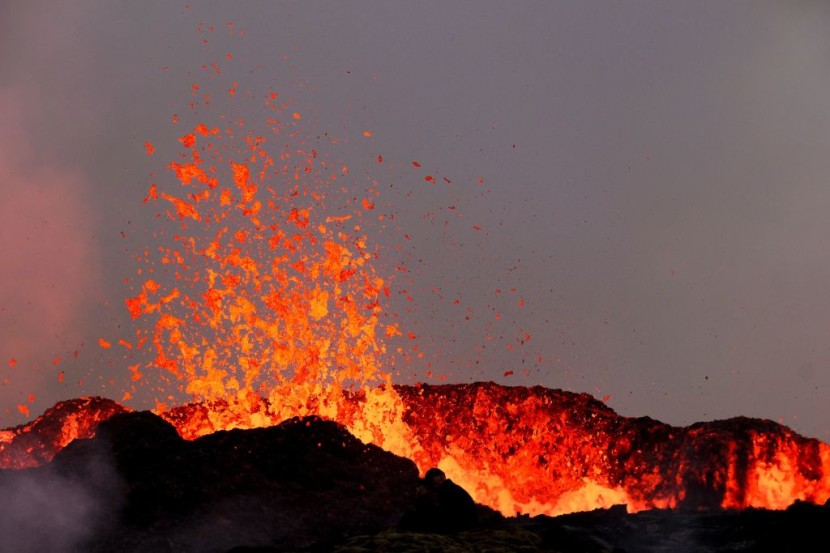
A volcanic eruption south of Reykjavik, the capital of Iceland, is sending smoke columns across a region known for its expansive lava fields, volcanoes, and geothermal activity.
The Icelandic Meteorological Office (IMO) reported that the "minor" eruption began on Monday in Iceland's Reykjanes Peninsula. Still, no ash has been released, and there have been no reports of disruptions at the country's Keflavik Airport.
Volcano Erupts in Southwest Iceland
On the slopes of the Litli Hrtur mountain, the IMO reported a 200-meter-long fissure "from which magma is erupting in a series of cascades."
Per CNN, hundreds of minor earthquakes have been detected recently, prompting scientists to warn of possible eruptions. Photos depict volcanic streams flowing along the dark fields, with distant fires and dense smoke billowing into the air.
Since the eruption occurred in an uninhabited area, there were no "immediate hazards" to communities or infrastructure, according to the IMO; however, it advised people to avoid the area, as "dangerously high levels of volcanic emissions" will accumulate.
The wind will convey a portion of these emissions north, potentially impacting several regions, including the capital of Iceland, according to the IMO. The eruption, which began at 14:40 UTC, was minor and posed "no imminent risks to communities or infrastructure," according to the Icelandic Met Office.
It is in a region between the Fagradalsfjall and Keilir volcanic mountains, approximately 30 kilometers from Iceland's coastal capital, Reykjavik, according to the office. Per NY Times, officials reported that lava was emerging as "a series of cascades" and streaming south from a fissure on the slope of a hill known as Litli Hrtur. According to officials, the fissure's toxic gas and vapor emissions were drifting to the northwest.
Officials Warn More Eruptions
As officials continue to assess the eruption's development in the coming days, the public was warned to avoid the area. The sparsely populated island nation, home to 370,000 people, is located on the Mid-Atlantic Ridge and has abundant volcanic features. In the past, major eruptions have wreaked devastation far beyond Iceland.
In 2010, ash from a volcanic eruption there blanketed much of Europe's skies, disrupting air travel across most continents. And in 1783, an eight-month-long eruption of a volcanic fissure caused a famine and sent pollution as far as Syria.
Scientists at the Icelandic Met Office had warned about the possibility of an eruption as the region had become a hotbed of seismic activity over the past week. Officials reported thousands of earthquakes with magnitudes between 4 and 5 in the region. Iceland has experienced eruptions on the Reykjanes Peninsula for three consecutive years.
Seismic activity also preceded eruptions in 2021 and 2022. Three travelers were injured last year when they attempted to trek near the eruption site to view the lava. According to Egill Hauksson, a research professor of geophysics at Caltech who has studied Icelandic seismic activity, the Reykjanes Peninsula's volcanic activity had been "relatively calm" for hundreds of years before these eruptions began.
The fissure in this eruption was approximately one kilometer long, according to officials.
It was still being determined whether the eruption would develop or how long it would last. According to Mr. Hauksson, they typically reach their apex after the initial few days.
The eruption from the previous year subsided after roughly three weeks. According to the United States Geological Survey, however, another eruption that began in March 2021 lasted for months.
Related Article : Video: New York 'Monster Storm' Causes Extreme Flooding in Roadways, Kills 1 Person
© 2025 HNGN, All rights reserved. Do not reproduce without permission.








